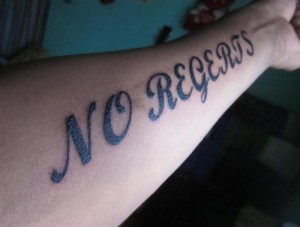Tattoo Equipment And Other Tools For Tattoo Artists
Tattoo equipment is one of the most essential parts of being a tattoo artist. Quality equipment that is reliable, durable and able to be autoclaved is necessary before attempting to do tattooing. First, a machine is necessary.
There are two types of tattoo machines: liners and shaders. These machines are built slightly differently so that they can be used for different purposes. A general machine, whether a liner or a shader, consists of a frame, removable tubes, and needles. The machine and the tubes (which the artist uses to grip the machine) are usually stainless steel. The tubes are removable for sterilization, since they may come into contact with blood or contaminated ink.
A liner machine holds a bar with one or several needles located close together (up to ten needles can be used). This machine is used for making lines and small details, and the needles puncture the skin and deposit ink. Shaders are larger machines and are used to fill in larger areas of skin. Both liners and shaders need a power supply, which is connected to an outlet or battery pack. A floor pedal is used to turn the equipment on and off.
While having a quality liner and shader is vital for an artist, there are other pieces of equipment that are necessary as well. In addition to the machines and their power cords, power supply and foot pedals, there are a variety of needles and tubes that can be used. These needle/tube combinations can come in different sizes and shapes (round needles or flat needles).

Quality ink is also needed, in a variety of colours. There should be small ink caps as well to hold small quantities of ink. Due to the possibility of contamination, ink should be poured into those disposable vials for use, rather than dipping the needle directly into the ink bottle.
Some artists also find it helpful to use stencils to trace designs, although these are not strictly necessary. Razors are useful for shaving the area of skin before tattooing, and gauze is also important for wiping away extra ink and blood.
The most important equipment needed is sanitation equipment. The tattooist should wash his or her hands and don a pair of latex or nitrile gloves.
There should be appropriate waste containers for sharps (used needles) and biohazardous waste (such as anything with blood or contaminated ink on it). Professional tattoo shops also have high-end equipment, such as autoclaves, for adequately sterilizing any non-disposable items.